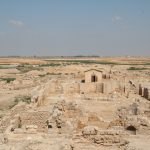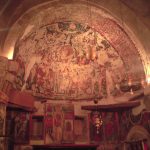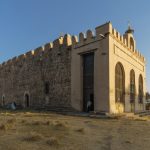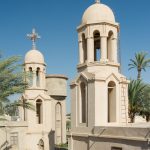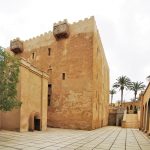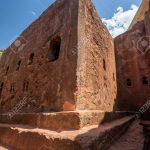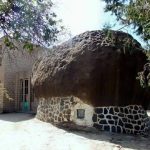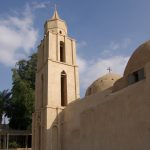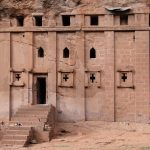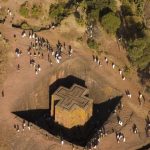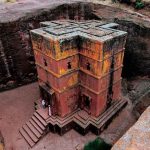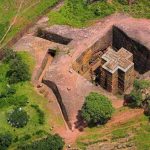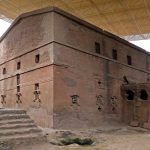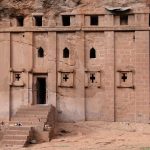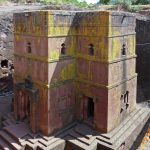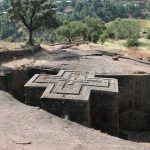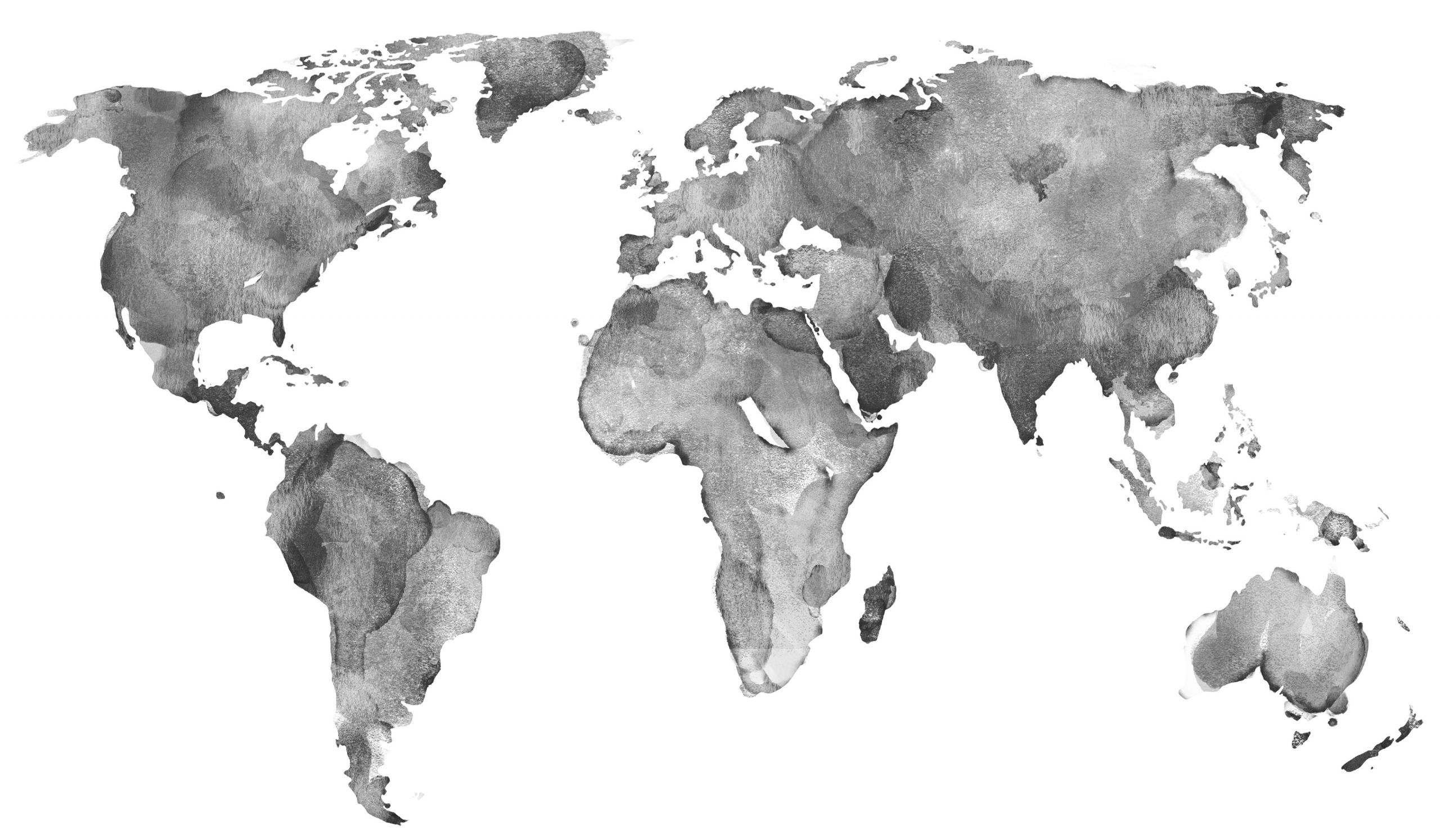Preface
Edmund Burke is quoted as having said that “The only thing necessary for the triumph of evil is for good men to do nothing”. When good men refuse to get involved in government or politics, they end up governed by their inferiors—specifically politicasters, who are defined as petty politicians; pretenders to politics. Politic here refers to “Wise; prudent and sagacious in devising and pursuing measures adapted to promote the public welfare; applied to persons; as a politic prince.” (Noah Webster’s 1828 Dictionary)
A similar phenomenon occurs in literary spaces. When people do not document their own history—either because they refuse to, or because they do not have the means to or because they do not have the influence to spread their views, then others outside their societies will reshape and document these histories according to their own narratives which may not necessarily be in line with that of the subject of investigation. In our world today, we live in an information age and global knowledge production and communication is the preserve of few. The media through which communication passes has been increasingly monopolized—so much so that persons like Noam Chomsky have written whole books on the concept of the "manufacture of consent".
Because of the foregoing when false information is shared via global media channels, it is sometimes difficult to uproot or dislodge it via alternative channels of information which do not have enough reach and depth. It thus won't be easy to convince some of Africa’s Christian history but that is fine. This write-up is for those who will pay the price to do their own research and hopefully go beyond the scourge of colonialism and the harm humans of various races have inflicted upon each other. Truth is, all human races come from the same progenitor. Nonetheless each continent has made contributions to the entire global family but Africa's is sometimes not widely circulated because by and large she does not currently own a stake in the global knowledge production or dissemination apparatus.
Summary Contributions
The global media apparatus is content to highlight Africa's errors and faults and not necessarily its positive contributions and achievements. Let us consider a few of these before touching on its role and achievements in the area of Christianity. Not many are familiar with the Great Benin City, the mighty medieval capital. According to Guardian Cities, “The Guinness Book of Records (1974 edition) described the walls of Benin City and its surrounding kingdom as the world’s largest earthworks carried out prior to the mechanical era. According to estimates by the New Scientist’s Fred Pearce, Benin City’s walls were at one point “four times longer than the Great Wall of China, and consumed a hundred times more material than the Great Pyramid of Cheops”. It adds:
Benin City was also one of the first cities to have a semblance of street lighting. Huge metal lamps, many feet high, were built and placed around the city, especially near the king’s palace. Fuelled by palm oil, their burning wicks were lit at night to provide illumination for traffic to and from the palace.
When the Portuguese first “discovered” the city in 1485, they were stunned to find this vast kingdom made of hundreds of interlocked cities and villages in the middle of the African jungle. They called it the “Great City of Benin”, at a time when there were hardly any other places in Africa the Europeans acknowledged as a city. Indeed, they classified Benin City as one of the most beautiful and best planned cities in the world.
In 1691, the Portuguese ship captain Lourenco Pinto observed: “Great Benin, where the king resides, is larger than Lisbon; all the streets run straight and as far as the eye can see. The houses are large, especially that of the king, which is richly decorated and has fine columns. The city is wealthy and industrious. It is so well governed that theft is unknown and the people live in such security that they have no doors to their houses.”
In contrast, London at the same time is described by Bruce Holsinger, professor of English at the University of Virginia, as being a city of “thievery, prostitution, murder, bribery and a thriving black market made the medieval city ripe for exploitation by those with a skill for the quick blade or picking a pocket”.
Not much mention of the man born in Libya Septimius Severus who became roman emperor and protected Britain at a critical point in its history or slaves who became university professors in Germany like Anton Wilhelm Amo. In 1734 he became the first black African to successfully publicly defend a doctorate in philosophy and letters from a German university, On the Impassivity of the Human Mind [De Humanae Mentis Apatheia]. Between 1734 and 1736 Amo lectured in philosophy at Wittenberg before returning to the University of Halle where between 1736 and 1739 he continued to teach and supervise his own doctoral students. Whilst in Halle for the second time he wrote one of his most important works, Treatise on the Art of Philosophizing Soberly and Accurately [Tractatus de Arte Sobrie et Accurate Philosophandi].
I could go on and on about the achievements of great Africans and great civilizations like Benin and Egypt. But that is not the purpose of this write-up. The purpose is to shine a light on a specific part of the history of the continent of Africa—its contribution to Christianity, Christian scholarship and the assemblage of the Holy Scriptures but first, a thought on knowledge production.
Africa(ns) in Old and New Testaments
Lack of education, miseducation or poor education of some has led to the notion that Christianity is a “white man’s religion” meant to control people of African descent. This assumption stems from the fact that colonialists were many times people who claimed to be Christian and some even—missionaries.
Is it a fact that some who claim to be Christian have been responsible for many horrible acts in the world such as slavery and colonialism? The answer is yes. I can say the same for Jews and other people groups—who also engaged in the same slave trade and colonialism to one degree or the other. But humans carrying the label of Christianity cannot be used as a standard for true Christianity. Only the Holy Scriptures and the Lord Jesus can be that standard. And these predate transatlantic slavery.
Christianity has a long history in Africa backed by both archaeological and historical proof. In the Old Testament, we learn of multiple figures who married African women—Moses married Zipporah, a woman from Cush or Ethiopia. Ethiopia back then spanned almost the entire continent.
Num 12:1 (CJB) Miryam and Aharon began criticizing Moshe on account of the Ethiopian woman he had married, for he had in fact married an Ethiopian woman.
Abraham has a son with Hagar from Egypt. King Solomon was visited with gifts from a woman ruling a fabulously wealthy Arabian or African kingdom to the south of Judah. The Strong's Greek and Hebrew Dictionary of the Bible defines Sheba as “Of foreign origin; Sheba, the name of three early progenitors of tribes and of an Ethiopian district” and The Complete Word Study Dictionary Scripture Reference Index defines Sheba as “A descendant of Ham through Cush and his son Raamah (1Ch 1:9).”
The following is taken from CBE International (CBE):
Psalm 68:31 declares that “Cush shall reach out its arms to God!” (The early Church loved this promise, for they considered Cush to be a metaphor for the gentile Bride of Christ.) The Psalms predicted that one day people would recognize the spirituality of the Cushites, and declare that they had been born anew in Zion (87:3-6). Isaiah foretold that God would bring forth a remnant from Cush (11:11), and a redeemed people bearing gifts to Zion (18:1-8). Zephaniah proclaimed that from beyond the rivers of Cush, God’s people should bring offerings (3:10). Amos expresses God’s concern for Cush: “‘Are you not like the Cushites to me, O people of Israel?’ says the Lord” (9:7).
Biblical scholars are aware that “Cush” sometimes refers to all of Africa, sometimes to all of Africa except Egypt, and sometimes to ancient Nubia, stretching from modern Aswan in the north to Khartoum in the south. Today most of this area lies in the Sudan. But how is the general reader to understand that Cush and Cushite (used 57 times in the Hebrew Bible) are in fact a designation for an African nation and people? Some versions of the Bible translate “Cush” as “Ethiopia,” but this does not ordinarily designate the modern country of that name. David Adamo has suggested that the best translation is simply “Africa.”
All of us have a right to know and applaud the important biblical role played by Africans. People of African descent may claim the deep roots of their ancestors in the Bible…
The bride in Song of Solomon is “black and beautiful” (Song 1:5). A Cushite who possessed tact, discretion, and a high position in the royal court appeared as a trusted courtier sent to tell David news of Absalom’s death (2 Sam 18:19-32)…
The bride in Song of Solomon is “black and beautiful” (Song 1:5). A Cushite who possessed tact, discretion, and a high position in the royal court appeared as a trusted courtier sent to tell David news of Absalom’s death (2 Sam 18:19-32)…
AFRICA IN THE NEW TESTAMENT
The kingdom of Cush continues to play a role in the New Testament, where we read of the conversion of Candace’s Ethiopian treasurer (Acts 8:26-39). Candace was the royal title of the Queen Mother of Nubia…located principally in what is now Sudan…
Further to the north lay Cyrene, capital city of the Roman province Cyrenaica. The city was famous for three schools of philosophy and for native sons who excelled in medicine, mathematics, rhetoric and literature. Perhaps the most illustrious of these was the astronomer Eratosthenes, who in approximately 200 BC computed the circumference of the earth with remarkable accuracy. No less brilliant was the Hellenistic poet Callimachus, who became the director of the library at Alexandria and acquired an astonishing reputation for the versatility of his aptitudes. Athletes from Cyrene excelled in Olympic competition, especially in horse chariot racing.
Ships carried corn, oil and wool from the fertile fields of Cyrene, as well as a contraceptive known as sylphium, much sought after in Rome. Cyrene maintained a monopoly on the herb until it became extinct through overharvesting approximately AD 200.
The citizens of Cyrene roamed far and wide throughout the Mediterannean world as merchants, athletes, philosophers, orators, mercenaries and entertainers. The Jewish community of the city had a deep interest in Judaism and produced an important literature including a five-book history of the Maccabees by Jason the Cyrenian (2 Maccabees 2:43). There were close ties with Jerusalem. Simon of Cyrene may have been impressed to carry the cross of Jesus when he came as a devout Jew to pay a Passover visit to Jerusalem. Apparently, he became a believer, and his sons were known to the Christian community (Mk 15:21; cf. Rom 16:13).
Although an African synagogue, that of the Cyreneans and Alexandrians, first objected to the preaching of Stephen (Acts 6:9), other natives of Cyrene became early adherents of Christianity and carried the good news to Cyprus (Acts 11:19-26). From there Cyrenians and Cyprians travelled on to Antioch and innovated a Gospel approach to non-Jewish Greeks. This revolutionary action drew the attention of the Jerusalem Council, and Barnabas was dispatched to assess this new development. Convinced of the authenticity of the mission, Barnabas strategized with the leaders and went to Tarsus to seek out Paul. Implementation of the Africans’ dream would require the involvement of a multinational and multicultural task force. As the church at Antioch prayed, searched the Scriptures and strategized for a full year, a core of leaders developed. Of the five who are named, two are African: Lucius of Cyrene, and Simon called the Black (Acts 13:1-2). Here again, translations fail to inform us that “Niger” is Latin for “Black.” This may well be none other than Simon of Cyrene.
The missionary agency was in large part initiated, strategized, promoted and directed by Africans. The story of Acts tells us that Paul and Barnabas were promptly sent to Cyprus, home of some members of the Antiochene community (Acts 13:4-12), but archaeological evidence tells us of the arrival of the Gospel in Cyrene. By the end of the first century AD, there were Christian burials inside the Jewish cemetery at Cyrene.
We cannot conclude this section without talking about the Lord Jesus himself. He was preserved from certain murder by being hidden in Africa—specifically Egypt for about 3 years.
Mat 2:13 (AMPC) Now after they had gone, behold, an angel of the Lord appeared to Joseph in a dream and said, Get up! [Tenderly] take unto you the young Child and His mother and flee to Egypt; and remain there till I tell you [otherwise], for Herod intends to search for the Child in order to destroy Him.
And on his way to Calvary, another African was compelled to help him carry the cross.
Luk 23:26 (AMPC) And as they led Him away, they seized one Simon of Cyrene, who was coming in from the country, and laid on him the cross and made him carry it behind Jesus.
Cyrene is the ancient Greek and later Roman city near present-day Shahhat, Libya. It was the oldest and most important of all five Greek cities in the region. It gave eastern Libya the classical name of Cyrenaica that it has retained into modern times.
Africa and Church History
The image is an ancient bible from Ethiopia dating back from about 330 - 600 AD.
African Popes
Before Protestantism, there was the catholic church or the Universal church headed by Popes. Not many are aware that the Catholic church has had three African Popes. In other words, three persons of African descent have governed and steered the affairs of the Universal Church.
“Three early popes were African. Pope Victor I (AD 189-199) popularized Latin as the common language of the church, thereby making Christianity more democratic and accessible to ordinary people. Pope Melchaides (311-314, sometimes known as Meltiades) was persecuted prior to his reign as pope. He was considered one of the African Christian martyrs. Pope Gelasius I (A.D. 492-496) worked to settle conflicts in church and believed that “both civil and sacred powers are of divine origin, and independent, each in its own sphere.”—From Priscilla Papers
It is interesting that just between a hundred and two hundred years after Christ’s death, an African was a pope— Pope Victor I (AD 189-199). According to New World Encyclopedia:
Having been born in the Roman Province of Africa, he was the first African pope.
Victor is best known for his role in the Easter controversy, in which he attempted unsuccessfully to require that all Christians celebrate the Resurrection of Jesus on Sunday, rather than in relation to the Jewish calculation of Passover. He was also actively involved in ridding the Roman church of Gnosticism and other heresies, including Adoptionism and possibly Montanism.
According to Jerome, Victor was the first Christian author to write theological works in Latin. Before Victor's time, Rome celebrated the Mass in Greek, and he may have been the first Roman bishop to use a Latin liturgy. Latin masses, however, did not become widespread until the latter half of the fourth century.
Church Fathers or Fathers of the Church
The Church Fathers or Fathers of the Church are the early and influential theologians and writers in the Christian Church, particularly those of the first five centuries. The term is used for the intellectual leaders of the Church, not necessarily saints, and does not include the New Testament authors. It also excludes writers condemned as heretics, although several of the Church Fathers, such as Tertullian and Origen, did occasionally express heterodox views.
Catholic and Orthodox traditions regarding the Fathers of the Church differ, with greater honor paid in the West to such men as Pope Gregory the Great and St. Augustine, and more attention given in the East to such writers as Basil the Great and John Chrysostom. In addition, Orthodox tradition considers the age of the Church Fathers to be open-ended, continuing up to the present day, while Catholic tradition ends the age much earlier.
Many of these fathers of the church were from the continent of Africa. The following is from Premier consists of Premier Christian Media Trust:
If Jerusalem was the birthplace of Christianity, then North Africa was the Bible Belt of the ancient world. It was also one of the intellectual hubs of early Christianity, producing such luminaries as Clement, Origen, Athanasius, Cyril, Cyprian, Tertullian and Augustine who forged doctrines, often in the face of persecution and heresy, that are the basis of our faith today. For example, Tertullian (c.160 – c.225 AD), who was born in Carthage, Tunisia, introduced the term trinitas to capture the idea of God as one substance but existing as three distinct persons. Athanasius of Alexandria (c. 296 – 373 AD) defended the belief that Jesus is fully divine against the Arian heresy that held that Jesus was created by God the Father. Arguably, one of the most influential theologians of all time was Augustine, bishop of Hippo (c.354 – c.430) whose ideas exert great influence today. Born in modern day Algeria, it is to him that we owe the Christian doctrines of original sin, predestination and free will. Thus, whenever we recite the Nicene Creed or affirm in other ways our beliefs in the Trinity, the full divinity and humanity of Jesus, original sin and human free will, we are giving voice to an orthodoxy that can be found in the scriptures, but which was articulated and preserved by North Africans. But how many of us already knew their names?
Let’s consult the Priscilla Papers of CBE International for more:
Clement of Alexandria (150-215) was a Christian philosopher with a keen desire to win pagan intellectuals to Christ. He directed a catechetical school at Alexandria and wrote important exhortations to the heathen as well as to Christians, calling them to a more perfect life in Christ.
Another African, Origen (185-254), became the director of a catechetical school at age 18. His was the finest mind the church would produce in 300 years. Origen was highly successful in debating Jews, pagans, and Gnostics, and is in fact credited with destroying Gnosticism. This important biblical scholar, theologian, exegete, and pioneer in biblical criticism produced the Hexapla, comparing six versions of the Bible. He profoundly influenced the theological thought of the succeeding centuries.
Tertullian (160-225) was a pagan lawyer who converted to Christianity. He authored apologetic, theological, and controversial works, and was the first theologian to write in Latin. It was he who formulated the doctrine of the Trinity, and coined nearly a thousand new words to explain Christian truths.
Athanasius (296-373), was Bishop of Alexandria and a major theologian and writer. He was the chief upholder of the doctrine that Christ was both man and God, and was the principle opponent of the Arian doctrine that Jesus was man rather than God. Even as a very young deacon, he was influential at the Council of Nicea. Opponents referred to him as the “black dwarf.” He was repeatedly exiled and persecuted, but his principles ultimately prevailed at the Council of Constantinople in 381.
Cyril, who died in 444, was also Bishop of Alexandria. He brilliantly represented and systematized the teachings of Athanasius and other Alexandrians. He was a vigorous opponent of heresy.
Perpetua and Felicitas were two martyrs who died in the Carthage arena in 202. Their story was widely used in winning others to Christ.
Cyprian, Bishop of Carthage, died a martyr in 258. He possessed a profound knowledge of Scriptures, wrote important theological works, fought heresy, and insisted on the unity of the Church.
Lactantius (c. AD 317) is best known for his Institutes, described as the “most comprehensive apology which Christianity created before the end of the time of persecution.” The major theme of the Institutes is justice. Lactantius insisted that God had given humanity a way of life open to all people regardless of race, education, sex, color or creed.
St. Maurice of Aganum (born about 287) was a Roman general who refused to kill Christians during the slave revolt in Gaul. He declared to the emperor Maximian: “We cannot obey you without denying God, the Creator of all things, our Master as well as yours, whether you acknowledge it or not”. He was slaughtered by imperial decree along with his regiment for his defense of slaves.
G. Marius Victorinus (280-363) was a neoplatonist professor of rhetoric with a brilliant record as philosopher and scholar. Educated in Africa but taught in Rome, he wrote theological and devotional works that were to lead to the conversion of Augustine.
Augustine (354-430), Bishop of Hippo, was one of the Doctors of the Church. A profoundly influential theologian, he dealt with three heresies: Manichaeism, Donatism, and Pelagianism. Augustine had remarkable insights into the human heart and soul. His most famous work is Confessions, written to describe his conversion and win others to Christ by detailing the philosophical basis for Christianity. Monica (331-387) was Augustine’s prayerful and powerful mother.
Zeno of Verona served as bishop of Verona from 362 to 375. Over one hundred of his tractates survive as well as a collection of sermons.
Optatus of Melevis served as a Bishop in North Africa. He worked to reconcile Christians during the Donatist Schism, and was influential in the East and West as well as in Africa. He died before 400 AD.
By 480 Victor of Vita served as Bishop in the province of Byzacena. He described the survival of the Church during an invasion of vandals. He perceived that the persecution was not only religious but also political.
Bishop Vigilius of Thapsus participated in a religious synod between the Arians and the Orthodox in 484. He produced important theological and ecclesiastical works.
Fulgentius of Ruspe (467-533) was a Roman civil servant who resigned his post to enter the priesthood. In 507 he was elected bishop of Ruspe. Later driven out of Africa by the Vandals, he was instrumental in popularizing Augustine’s work.
Other Fathers - Desert Fathers
The Desert Fathers were also African. They were early Christian hermits, ascetics, and monks who lived mainly in the Scetes desert of Egypt beginning around the third century AD. The most well-known was Anthony the Great, who moved to the desert in AD 270–271 and became known as both the father and founder of desert monasticism.
SOURCE DOCUMENTS: Hidden Africans Of The Bible And Early Church; CBE International
Historical African Churches
Not only have we seen African theologians who fathered the Global church dating back to second century after Jesus’ death but we also have evidence of CHURCHES AND MONASTERIES IN AFRICA dating back to the 3rd and 4th centuries. I believe there were churches before this time in Africa. Kudos to the first Apostles for a job well done! Pay attention to the dates!
There are MANY more churches dating back from the 5th century till now but cannot post all of them now.
Lalibela
Worthy of special mention is the Lalibela. Ethiopia was one of the earliest nations to adopt Christianity in the first half of the 4th century, and its historical roots date to the time of the Apostles. The churches themselves date from the 7th to 13th centuries, and are traditionally dated to the reign of the Zagwe king Gebre Mesqel Lalibela (r. ca. 1181–1221). Lalibela (Amharic: ላሊበላ) is a town in Lasta Amhara Region, Ethiopia famous for its ROCK-CUT MONOLITHIC CHURCHES. The whole of Lalibela is a large antiquity of the medieval and post-medieval civilizations of Ethiopia. Lalibela is one of Ethiopia's holiest cities, second only to Axum, and a center of pilgrimage. Unlike Axum, the population of Lalibela is almost completely Ethiopian Orthodox Christian.
SOURCE: Wikipedia
Ethiopia: Then and Now
Africa’s map today is not the same as in the days of Jesus or his Apostles. It has gone through much revision by various cartographers. Ethiopia in biblical times or in the days of the early Apostles and later the popes is drastically different from the Ethiopia of today. For instance, what is known as the Gulf of Guinea today was prior named the Ethiopic Sea (Oceanus Aethiopicus) but it was renamed the South Atlantic Ocean at the 1884–1885 Berlin Conference which sealed the Scramble for Africa.
But why is this important? Because it tells us that Christianity in Africa was not relegated to North Africa but as per historical records the Ethiopian Eunuch brought Christianity to his kingdom—which covered much of the African continent today.


